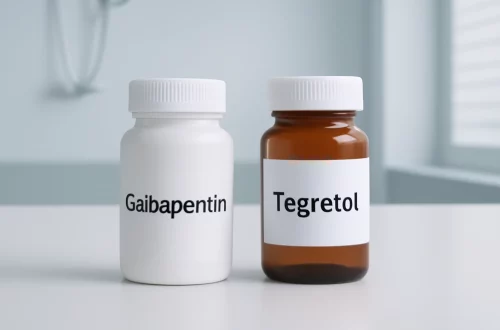
Exploring the Different Types of Penises and Their Characteristics
The human body is a marvel of biological diversity, and one of its most discussed features is the penis. Often surrounded by myths, misconceptions, and cultural taboos, understanding the penis from a biological and anatomical perspective can shed light on its various forms and functions. The penis is not merely a reproductive organ; it plays a significant role in sexual health, identity, and overall masculinity.
Throughout history, different cultures have attached various meanings to the penis, associating it with power, virility, and fertility. These societal views can influence how individuals perceive themselves and their bodies. Interestingly, while many might think of the penis in straightforward terms, there is a broad spectrum of shapes, sizes, and characteristics that are entirely normal.
This diversity is not just a matter of aesthetics; it can impact sexual health, performance, and pleasure. Additionally, many individuals may have questions about what is considered typical and what might signal health issues. By exploring the different types of penises, we can foster a more inclusive dialogue that embraces the multitude of ways human bodies can express themselves.
Understanding Penis Size Variability
When discussing penises, size is often at the forefront of people’s minds. While societal norms may create unrealistic expectations, research indicates that penis size varies significantly among individuals. On average, studies have shown that the erect penis measures about 5 to 6 inches in length, yet there are many that fall outside this range, and all are considered normal.
Size can be influenced by various factors, including genetics, hormonal levels, and overall health. Importantly, penis size does not correlate directly with sexual prowess or ability to please a partner. Many individuals often overlook the fact that sexual satisfaction is influenced by emotional connection, technique, and communication rather than sheer size alone.
Moreover, the perception of size can be skewed by cultural influences and media portrayals. Brands and products often capitalize on these perceptions, leading to an industry focused on enhancing size. However, it’s crucial to approach such marketing with skepticism, as most enhancement methods lack scientific backing and can even pose health risks.
In addition to length, girth is another aspect of size that varies widely. Many people find that girth can play a significant role in sexual pleasure, as it can create a fuller sensation during intercourse. However, like length, girth is subject to individual variability and personal preference.
Ultimately, it’s essential to recognize that what’s most important is the health and functionality of the penis rather than its size. Embracing the diversity of penis sizes and understanding that each body is unique can lead to healthier attitudes towards sexuality and self-image.
Penis Shapes and Their Implications
The shape of the penis can also vary significantly, with some common forms including straight, curved, or even bulbous shapes. Each type can have different implications for sexual activity and comfort. For instance, a slight curve can enhance pleasure for some partners by allowing for different angles during intercourse, while others may prefer a straighter form.
Curvature in the penis can sometimes be a natural variation, but in certain cases, it can be indicative of a condition known as Peyronie’s disease. This condition results from the development of fibrous scar tissue, causing painful curvature and potentially impacting sexual function. Men experiencing significant discomfort or changes in shape should seek medical advice to explore treatment options.
Another aspect of shape to consider is the glans, or head of the penis, which can vary in size and prominence. A pronounced glans can enhance stimulation for both the individual and their partner during sexual activity.
Moreover, the shaft of the penis can also present variations, such as having a more pronounced or tapered appearance. These variations can affect how the penis interacts with the vaginal canal or anus during intercourse, influencing sensations for both partners.
Embracing these differences is essential, as each shape can bring unique experiences to sexual encounters. Understanding that no one form is “better” than another can lead to greater acceptance and satisfaction in sexual relationships.
The Role of Circumcision in Penis Characteristics
Circumcision is a practice that involves the surgical removal of the foreskin from the penis, resulting in various anatomical differences. The choice to circumcise can be influenced by cultural, religious, or medical reasons, and the implications of this decision can be significant.
Circumcised penises typically have a different appearance compared to uncircumcised ones. The glans is more exposed, and this can lead to differences in sensitivity. Some studies suggest that circumcision may reduce the risk of certain infections and sexually transmitted diseases, while others argue that maintaining the foreskin can provide protective benefits.
The foreskin itself has nerve endings that can enhance sexual pleasure, and some individuals may report differences in sensation post-circumcision. It’s essential to recognize that responses can vary widely among individuals.
Additionally, circumcision can have implications for sexual health and hygiene. Circumcised individuals may find it easier to maintain cleanliness, but this does not mean that uncircumcised individuals cannot achieve good hygiene practices.
Ultimately, the decision to circumcise is highly personal and should be made with careful consideration of the potential benefits and drawbacks. Open dialogue about this topic can help individuals make informed choices that align with their values and beliefs.
Penis Health and Maintenance
Maintaining penis health is crucial for overall sexual wellness and can prevent various medical issues. Regular hygiene is a foundational aspect of this maintenance, as it helps prevent infections and odor. For uncircumcised individuals, it’s important to clean under the foreskin to prevent the buildup of smegma, which can lead to infections.
Furthermore, regular check-ups with a healthcare provider can identify potential issues early. Conditions such as erectile dysfunction, Peyronie’s disease, and sexually transmitted infections can significantly impact sexual health. Addressing these concerns promptly can help mitigate their effects and promote a healthier sexual life.
Lifestyle factors also play a significant role in penis health. Maintaining a balanced diet, exercising regularly, and avoiding smoking and excessive alcohol consumption can contribute to better blood flow and overall health. Stress management techniques, such as mindfulness or therapy, can also enhance sexual health by improving confidence and reducing anxiety.
Education about safe sexual practices is equally vital. Using protection during sexual activity can significantly reduce the risk of sexually transmitted infections and unwanted pregnancies.
In conclusion, understanding and maintaining penis health is essential for a fulfilling sexual life. Embracing the diversity of penis characteristics and fostering open conversations about sexual health can lead to more informed individuals who prioritize their well-being.
**Disclaimer**: This article is for informational purposes only and should not be considered medical advice. For any health concerns, please consult with a qualified healthcare professional.




